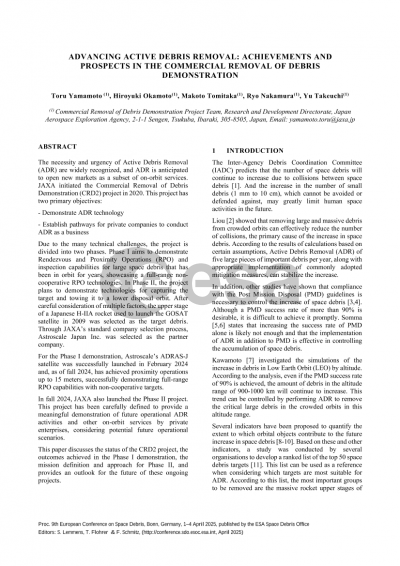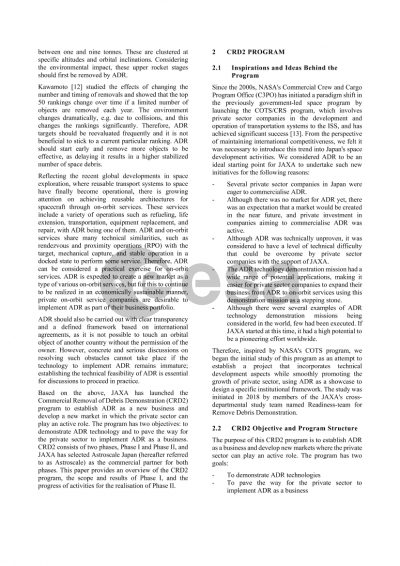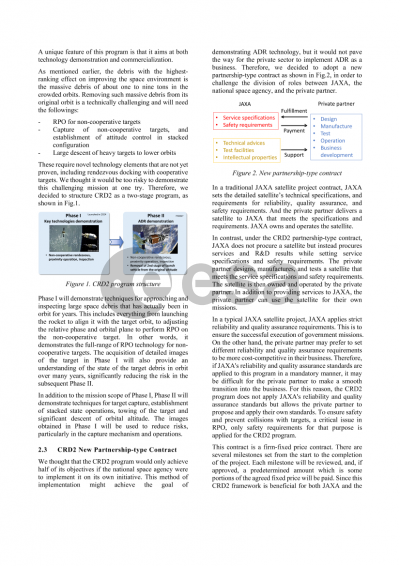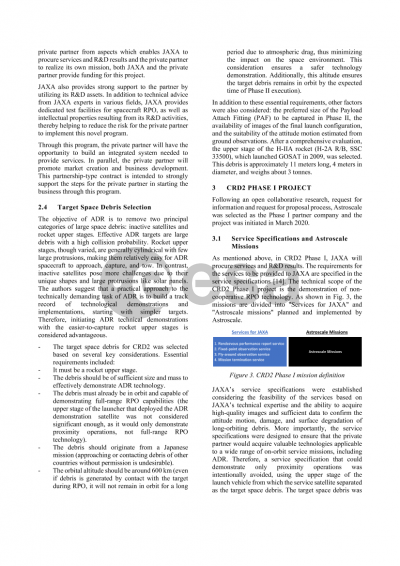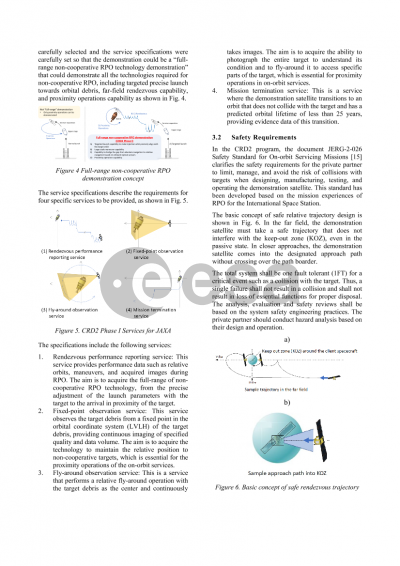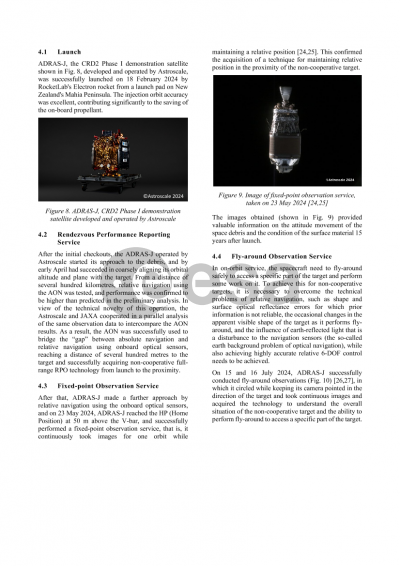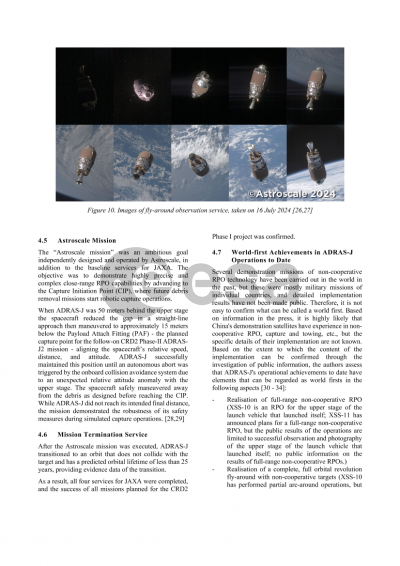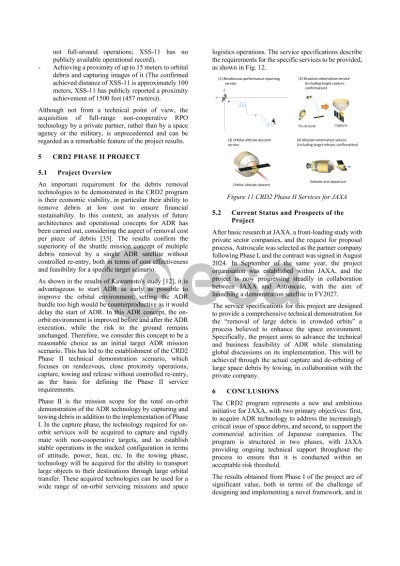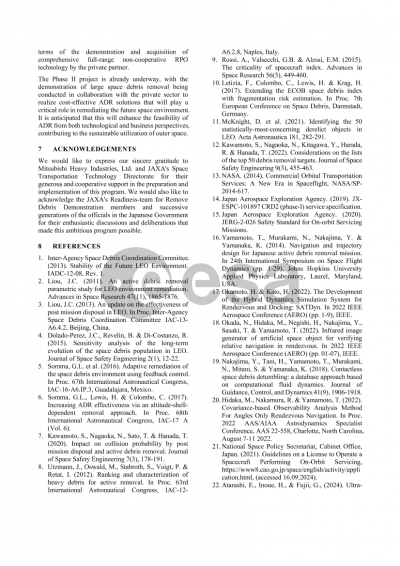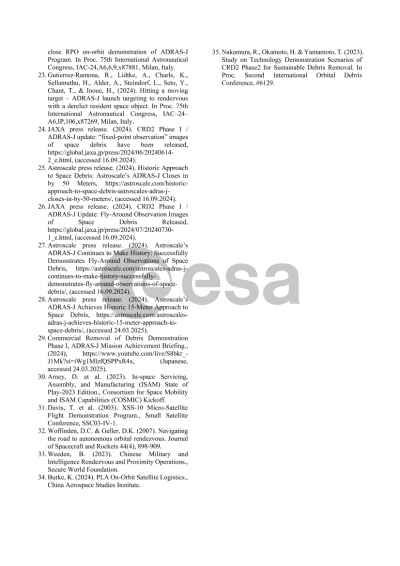Document details

Abstract
The necessity and urgency of Active Debris Removal (ADR) are widely recognized, and ADR is anticipated to open new markets as a subset of on-orbit services. In line with Japan’s "Basic Space Plan", JAXA initiated the Commercial Removal of Debris Demonstration (CRD2) project in 2020. This project has two primary objectives:
- Demonstrate ADR technology
- Establish pathways for private companies to conduct ADR as a business
Due to the many technical challenges, the project is divided into two phases. Phase I aims to demonstrate Rendezvous and Proximity Operations (RPO) and inspection capabilities for large space debris that has been in orbit for years, showcasing a full-range non-cooperative RPO technologies. In Phase II, the project plans to demonstrate technologies for capturing the target and towing it to a lower disposal orbit. After careful consideration of multiple factors, the upper stage of an Japanese H-IIA rocket used to launch the GOSAT satellite in 2009 was selected as the target debris. Through JAXA’s standard company selection process, Astroscale Japan Inc. was selected as the partner company.
For the Phase I demonstration, Astroscale’s ADRAS-J satellite was successfully launched in February 2024 and, as of fall 2024, has achieved proximity operations up to 50 meters, including fixed-point and fly-around observations, successfully demonstrating full-range RPO capabilities with non-cooperative targets.
In fall 2024, JAXA also launched the Phase II project. This project has been carefully defined to provide a meaningful demonstration of future operational ADR activities and other on-orbit services by private enterprises, considering potential future operational scenarios.
This paper discusses the status of the CRD2 project, the outcomes achieved in the Phase I demonstration, the mission definition and approach for Phase II, and provides an outlook for the future of these ongoing projects.
Preview
